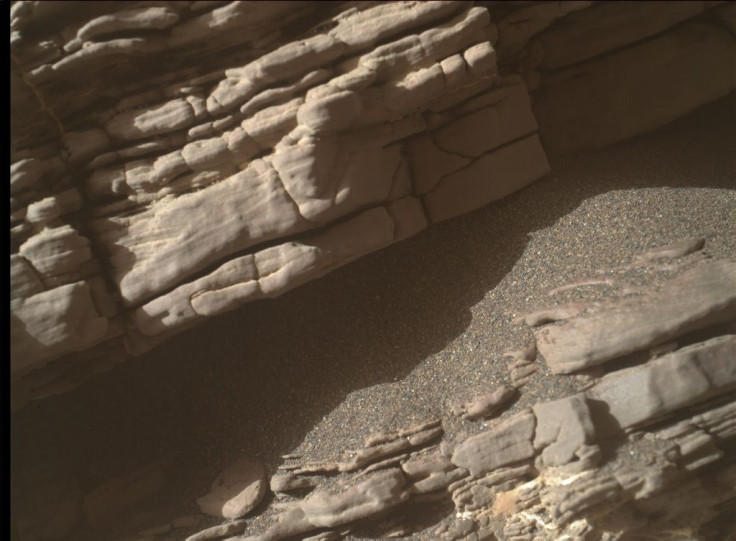NASA Photo Captures 'Floating UFO' On Mars?

An unidentified flying object (UFO) was supposedly discovered in one of the photos beamed by the NASA Mars rover Curiosity, and it got both scientists and alien theorists discussing what the object actually is.
In a previous report from Space.com, a “floating spoon” can be seen in a captured image by the Curiosity a few years back. The spoon can be seen hovering over the Martian surface among the planet’s uneven rock formations. The photo is a spectacular display of alien vista and it definitely got a lot of alien enthusiasts and NASA scientists talking about the image. One can clearly see a handle that extends to the slotted area of the spoon. The shadow beneath it seemingly confirms that the rock lies suspended in mid-air.
The “floating spoon,” however, is nothing more than an awesome rock formation which scientists believe to have been formed over time by the planet’s strong winds. This was confirmed by NASA officials when it was released.
"There is no spoon. This weird Mars feature is likely a ventifact — a rock shaped by wind," NASA officials wrote in the image description.
The picture was taken by the Curiosity during its 1,089th day on planet Mars. The space engine has been on the planet since 2012, and although scientists expected that it will be exploring only until 2012, the Curiosity has not stopped learning what Mars has to offer up to now.
The floating spoon is only one of the many images captured by the Mars Curiosity rover that has created some exciting optical illusions. Alien theorists or UFOlogists have also spotted animals such as a rat, a pig, a penguin and a bird that look like it’s been roaming around the surface and atmosphere of Mars.
Some have also claimed to have seen a woman wearing a floating dress looking over the surface of Mars while some went on to claim that they also spotted a fragment of a statue depicting a Syrian god.
On a more exciting and scientific discovery, the Mars Curiosity rover detected curious amounts of methane gas in the atmosphere. Methane has always been associated with biological microbes back on Earth so finding something similar on Mars could mean there might be living creatures hiding beneath its red, dusty surface. The methane discovery turned out to be a fluke and now scientists are back to scratch in proving that there’s life on Mars.
© Copyright IBTimes 2024. All rights reserved.





















